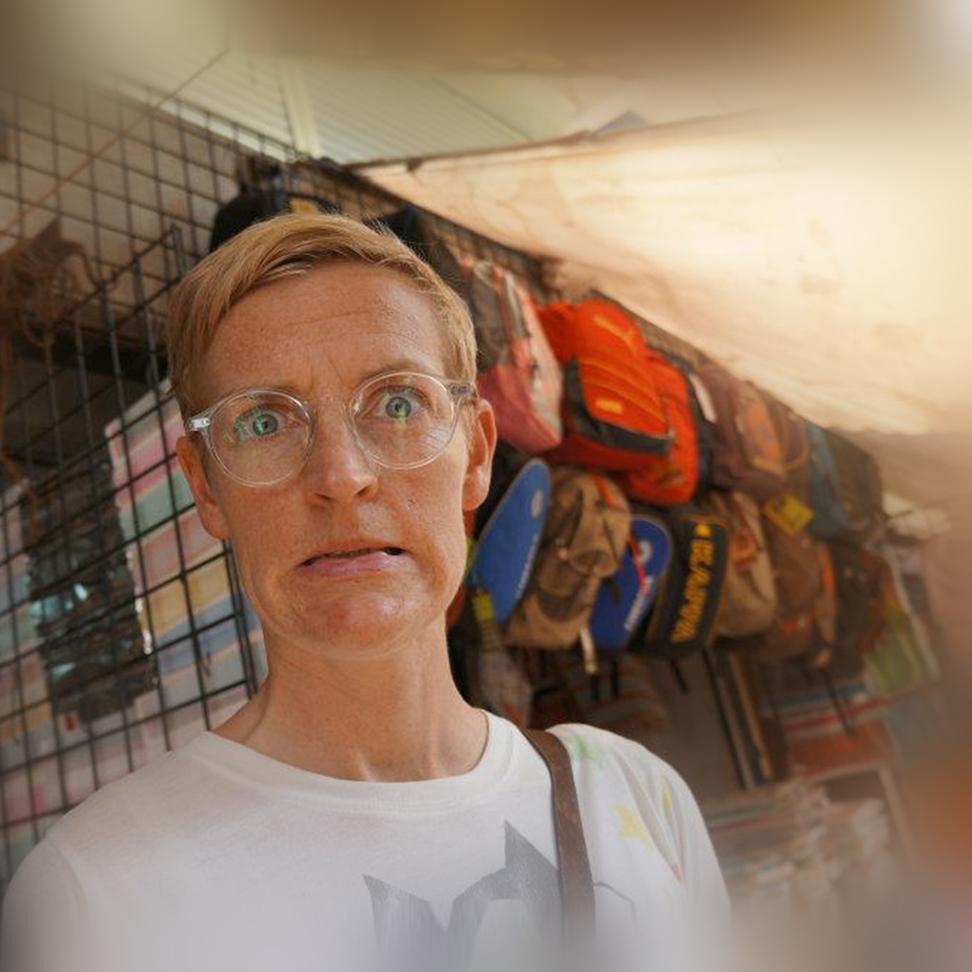No matter if it’s your first trip with your first child, or your fifth with your fifth, traveling with children will always be daunting. From what to pack to how to get there, it’s rife with potential worries.
However, there are some tips that can help you prepare, and save you from going insane. Below, we’ve listed 25 top tips for traveling with kids. Some are for babies, some are for older children, and some are for you.
1. Just do it!
While the idea of traveling with children might be overwhelming, the most important thing to remember is: it will end. You will get there. You will survive.
2. Take it slow
You might be used to rushing off the airplane and through the airport, making use of all those secret shortcuts, but those days are over. Sit back, let everyone rush around you, and just go with the flow. You’re not in charge anymore – enjoy it.
3. Don’t overpack
Remember that almost everything can be bought abroad. It might not be the same brand, but you’ll manage. Diapers are often a concern as 100% eco and organic brands are sometimes hard to find. If you’re used to using an eco-brand, do a test run with a non-eco brand before you leave to see if your little one has any kind of reaction.
4. Hotel or vacation rental?
Hotels have perks (room service, meals, baby-sitting services, etc.), but vacation rentals mean you can make it your home – and prepare your own meals, which might be useful if your child has a special diet. It’s a personal choice, but one worth thinking about.
Read more: Hotel star ratings – what do they really mean?
5. Book wisely
If you go the hotel route, take your time booking. You might have stayed there before and loved it, but think long and hard about it. Was your room up a steep hill? Were there lots of steps? What might have been paradise for just the two of you can easily be a nightmare when you’re pushing a stroller and a baby.
6. Brand ‘em and track ‘em!
If you’re worried about your child getting lost, you can brand them by writing your name and phone number on their arm. That way, if they are found, you can be contacted easily. You could also invest in a GPS tracking device. Attach it to your child’s wrist or bag, and follow along via the app.
7. Pool vs. sea
Even if you plan to stay by the beach, you might want to consider making sure there’s a pool as well. Lots of children love being in the sea, but others can’t stand it. A pool is perfect for little ones to splash around in, cool down in – and get exhausted in.
8. Baby carriage vs. stroller vs. sling
This is a common dilemma when traveling with kids and there’s no easy answer. A lot of it depends on where you’re going. Will the streets be even and paved or will there be potholes and off-roading involved? Will it be extremely humid or fairly cool? What is your child used to?
An all-around good option is a light stroller. They’re easy to travel with and can be taken right up to the gate; they can be used as a temporary bed for afternoon naps; they’re light and breathable but can also be insulated with blankets and a rain cover; and they’re good on almost all terrain.
9. Car seat or not?
Some people swear by them, others think it’s madness to bring such a large item for the short time they’ll be used. They require an extra seat on the flight, and are quite bulky, but then you’re guaranteed to have it for any kind of car ride. If you do plan to take one, it might be worth investing in a car seat/pushchair combo so you don’t have to lug even more weight around.
10. Pack wisely
Your nappy bag will count as your carry on, so make sure you’ve got everything (you might want to factor in possible delays too): baby wipes; spare pacifiers; diapers; snacks (but not full of sugar! However, it is worth bringing a few suckable sweets to help with the pressure change during take off and landing); a change of clothes; plastic bags (for diapers and in case clothes get really dirty); headphones; toys; a pillow; extra batteries or power packs; tablet/DVD player; and baby wipes.
If there’s any room left for your things, fill it with baby wipes – you’ll need them.
Read more: A traveling checklist in 21 handy tips
11. Packing baby food
Many airports will allow baby milk and baby food to be carried through security in containers over 100ml. They usually open containers to screen contents at the security point, but this only takes moments and doesn’t contaminate the food in any way. It’s worth checking with the airports you’ll be traveling through, just to make sure.
12. Plan your flights
Try to plan your flights around bedtime. Evening flights can be more expensive, but if ease is what you’re after, a sleeping child is a blessing for everyone. If you have to make a connecting flight, be sure to leave a good amount of time – the last thing you need is a mad dash through an unfamiliar airport.
Try, as much as you can, to make the journey part of the vacation. Give yourself a couple of hours, stretch legs, visit bathrooms, eat, talk, play, and get ready for the next flight. And don’t forget that your best bet for the cheapest fare is to book 53 days in advance.
13. Research your destination
If you’re breastfeeding, it’s worth having a Google about whether or not breastfeeding in public is OK wherever you’re headed. Some countries are totally OK with it, others require you to go somewhere a little more private. If in doubt when you’re there – just ask.
14. Research, research, research!
This is for both pre-trip and during trip. Does your baby need a visa? What jabs do you – and your child – need? Should you bring medication, e.g. malaria tablets? You don’t want to get caught out last minute.
15. Where to sit?
Where you can sit on a plane with a small child is sometimes dictated by the aircraft’s design: some only have extra oxygen masks over certain seats. However, not all aircraft are like this, so double check with the airline, and take a moment to think about what seat is best for you.
Sitting at the very end of the airplane does mean you’ll disturb fewer people. It also means you can get up and make use of the galley, and have the toilets close by. However, sometimes these seats don’t recline fully, and the back of the aircraft can be noisy.
The middle of the plane gives you the option of using the bulkhead seats. Not only does this mean more legroom – and thus more floor space for play – it also means the possibility of a baby cradle (if the aircraft has them). However – it also means no storage under the seat in front of you.
Sitting at the front is similar to the back, except the kitchen area is typically smaller, and busier. One other thing to consider that really depends on the child’s age is: window or aisle? Is it better to be tucked away or with space to move easily?
16. Do a practice run
This could be a practice pack and trip to the airport – or as far as you can go – for both your sake and the child’s. Airports are big and busy, and your child might find it all a bit much. Easing him or her into it might make things smoother for the day. Another good tip is to do a practice flight. Maybe a weekend away somewhere domestic? A short hop on a small plane will introduce your little one to flying, and let you see if he or she has any particular worries or concerns.
17. Is low-cost worth it?
While it might be tempting to make use of low-cost carriers now that you’re a family, bear in mind they often fly into remote airports, which could mean more travel. It might be worth ditching the low-cost airlines and paying a bit more for ease and peace of mind (not to mention the fact that the price difference, once you factor in the extra transport from the remote airport to the city center, is often minimal).
18. Airport time – check-in online
Try to minimize time spent waiting in line once at the airport. One of the easiest things to do is check-in online, then all you have to do is hit the bag drop and get through security. More often than not, there is a family area at the security check, so you know that everyone around you is in the same boat; or should that be plane?
19. Leave plenty of time
While you want to minimize time waiting in line, you certainly don’t want to have to rush. Leave home with hours to spare – if you get to the airport quickly, make use of the play area and get those children exhausted: the more energy they spend on the ground, the less they’ll have in the air.
Read more: The 10 best airports in the world
20. What could go wrong?
Before you go, write a list of everything that could go wrong, from complete meltdown mid-flight to missing the flight entirely, and jot down how you’d cope. Running through situations before they happen can leave you mentally prepared – just in case!
21. Explain the journey
If your child is new to flying and traveling in general, talk them through it. Let them know what’s going to happen and when it’s going to happen, like when they have to fasten their seatbelts and why. Most children think flying is fun, so the best thing you can do is encourage it. It is an adventure after all!
22. Plan – but don’t overdo it
You want to keep your children entertained, but you don’t want the whole trip to be regimented. Instead of booking dozens of excursions, have them written down – or keep track of them in an app. momondo places city guides are available for 14 cities, and feature over 200 tips, color coded for mood, such as family, social and local. They’re also completely free, and feature offline maps so you don’t have to worry about data roaming.
23. Meet and assist
Check if your airline or the airport provides a meet and assist service. Not all do, but many will help you as much as possible, from boarding to arrival. If you’re traveling with more than one child, alone with one child, or if you’re completely new to this, these services can be a lifesaver!
24. Keep calm
If your child chooses the worst possible time to turn into a screaming beast from another dimension, take a deep breath and try to keep calm.
Read more: How to avoid travel stress
25. Enjoy it
Leave lots of time, pack well, and make the travel part of the journey. Just remember that you’ll be OK, and you’re supposed to be enjoying yourself!




